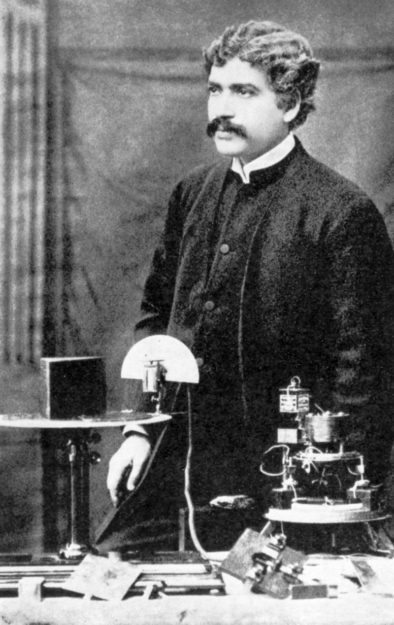Google’s doodle on November 30 celebrates the 158th birthday of legendary scientist Jagadish Chandra Bose. The polymath is credited with many inventions and ground breaking research.
We were taught in school that with the help of his invention, called a crescograph, he found out that plants react to external stimuli. Later, we teased vegetarians: “Yaar, plants ko bhi dard hota hai.”
We also know that Bose was subjected to racial discrimination while he was a professor of physics at the University of Calcutta, which was then run by the British.
While much of the credit for the invention of the radio goes to Guglielmo Marconi, Bose’s contribution to wireless radio is largely ignored. In fact, Bose was one of the ‘fathers of radio science’
What’s relatively unknown is that while much of the credit for the invention of the radio goes to Italian electrical engineer Guglielmo Marconi, Bose’s contribution to wireless radio is largely ignored. In fact, Bose (no relation to Amar Bose of audio equipment maker Bose Corporation) is considered one of the ‘fathers of radio science.’
In popular imagination, Marconi is still the inventor of radio. There’s a lot of controversy around this, especially around a device called the mercury drop coherer, which is used to detect the radio frequency signals that the antenna picks up.
The coherer converts a radio signal to a direct current signal which then powers an earphone or a morse printer by which humans can hear or see the signal. This is described well in a paper published in 2006 by Varun Aggarwal, then a student of engineering in Delhi.

The crux of the argument in favour of Bose lies in a paper entitled: Sir JC Bose diode detector received Marconi’s first transatlantic wireless signal of December 1901 (the “Italian Navy Coherer” Scandal Revisited), by P K Bandyopadhyay, published in the proceedings of IEEE (Jan 1998) in 2002.
According to Bandyopadhyay, the actual origin of the “mercury coherer with a telephone” setup used to receive the first transatlantic wireless signal by Marconi in 1901 has been proven to be an invention of J C Bose of Presidency College, Calcutta. The invention was read at the Royal Society Meeting of Great Britain in 1899 and published in its proceedings.
“Twenty-one months after that disclosure (in February 1901, as the records indicate), Lieutenant L. Solari of the Royal Italian Navy, a childhood friend of G. Marconi’s, experimented with this detector device and presented a trivially modified version to Marconi, who then applied for a British patent on the device,” Bandyopadhyay writes.
The actual origin of the “mercury coherer with a telephone” setup used to receive the first transatlantic wireless signal by Marconi in 1901 has been proven to be an invention of J C Bose
The “scandal” of the Italian Navy Coherer was brought to light by Italian A Banti and historian V J Phillips has analysed this, writes Bandyopadhyay in his paper.
Like many things in science, the work of a scientist is built on top of other scientists. Also, there usually are many scientists working on solving similar problems at the same time. So it isn’t easy to squarely resolve debate around some inventions. But that shouldn’t be the reason why we don’t get to hear of Bose’s contribution to wireless radio.
In 1997, the Institute of Electrical and Electronic Engineers named Bose as the ‘father of radio science.’
Subscribe to FactorDaily
Our daily brief keeps thousands of readers ahead of the curve. More signals, less noise.
To get more stories like this on email, click here and subscribe to our daily brief.
Lead Image: Google Update: 5.56 PM (IST)








